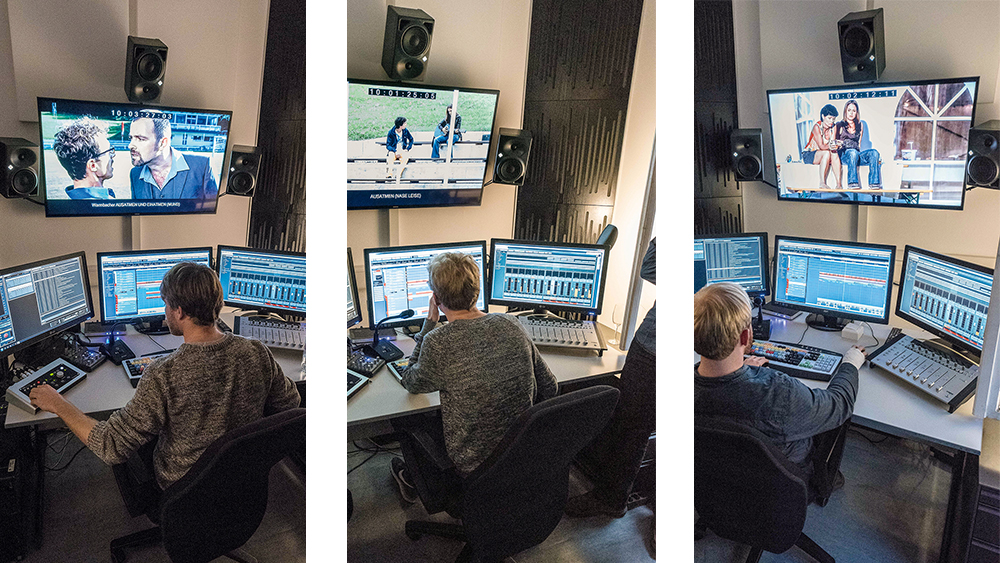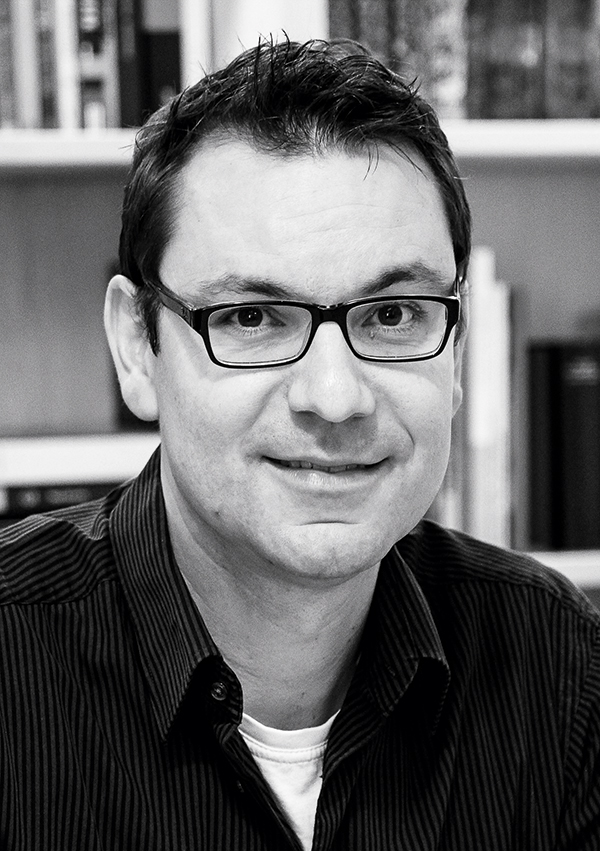The coffee cup being put down on the table, the steps of the pursuer in the dark, or the ring of a scalpel picked up by a doctor. In films, we often hear sounds that we perceive barely or not at all in real life. The fact that viewers seldom think about these sounds is good: giving consideration to every spoken word and audible sound in a film is hard work, and it’s the responsibility of so-called sound designers.

Together with a film’s visual dimension, the sound has to replace sensory impressions that the audience would not otherwise perceive. And ideally, the amount of detailed work and fine-tuning involved should be imperceptible in the final product. “Sound design is an art that works its magic in secret—the moment you notice it is when it stops being effective,” explains Philipp Mosser, senior lecturer for sound design at the Department of Film and Television—Film Academy Vienna, whom mdw Magazine contacted to find out more.

“Sound design means working creatively with sound in film. It’s not about music, but about speech, noises, and atmospheres.” Around 80 to 90 percent of the sounds in a finished cinematic feature were not recorded on set—they’ve been added after the fact. Because it’s after a film has been shot and the images have been edited that the real work of sound designers—who’ve ideally already been involved in the scripting phase—typically begins. They need to listen to the original sound, evaluate it, and edit it in order to ultimately add noises and atmospheric elements in consultation with the directing team. “It’s very important to have good original sound from the set. The main thing there is the actors’ speech. Sound design then adds noises and atmosphere along with sound effects. Nearly every noise is given additional amplification in a cinematic film,” says Mosser of the working process in sound design. Alongside Foley artists, who employ methods that might often strike one as amusing (like combining baking powder and corn starch to produce sounds suggestive of steps in the snow), sound designers resort first and foremost to their archives as an important source. Furthermore, original props also often end up finding their way to the sound studio. It can be useful, for example, for the carrying or closing of a coffin to be recorded all by itself. For Austrian feature film productions, sound designers have an average of ten to fourteen weeks to do their work, concluding with a mixing phase in which the mixing engineer and director are present for the fine-tuning.
At Film Academy Vienna, students begin discovering this field in their very first semester: the introductory lecture Tonschnitt und Sounddesign [Sound Editing and Sound Design] serves to sensitize the academy’s future film professionals to the material. Film excerpts are viewed and discussed as a group. “Lots of them have never really given much thought to the fact that sound doesn’t only come from the set. Sound isn’t a product of coincidence; it’s a deliberately shaped element of any film. So we want the students to learn how to listen—in films, as well as in everyday life—and be able to recognise things like how a space actually sounds.
They need to figure out what they’re hearing and above all what they want to hear.” In the first three applied courses, students have to take charge of sound design themselves as part of their basic general studies—in other words, everyone has to have done everything once, regardless of what specific degree programme they’re in. In this way, they get a feel for what sound design can make possible. At the beginning of the first applied course, they’re given several hours of introduction to the sound editing programme they’ll be using before the practical work begins. Over the course of their studies, editing students have to do two further applied courses in sound design. “Students today are for the most part already quite familiar with these things and already know how to use several editing programmes. Our primary goal here right now isn’t to train sound designers, but rather to show future directors, film editors, and producers what all can be done with sound and how important that is for their own works and creativity,” explains Mosser, who was himself once a directing student at Film Academy Vienna. “It was by editing my own films that I discovered my enthusiasm for sound. I was lucky that sound designers were only just inventing themselves here in the 1990s, which meant that I more or less stumbled into the ‘founding era’ of Austrian sound design as a standalone profession.”
Historically, this profession developed out of film editing. While the separation between visual and sound editors appeared relatively early on internationally—50 to 60 years ago in the case of major Hollywood productions—in Austria, it was only in the 1990s with the advent of Dolby Digital (a multi-channel digital sound system), along with other new digital editing systems, that the two areas began to grow more and more distinct and, above all, specialised. The new technical environment in which sound processing and editing took place made far more things possible in far shorter periods of time—but also entailed new tasks. A great number of visual editors and audio engineers thus ended up specialising in sound, resulting in sound design as its own profession. This field of work has gone through rapid development in recent years, and today, it’s become almost impossible for a single person to take care of both video and the audio.
Mosser absolutely does do research in preparation for new projects: “Sound research is something very exciting, because you experience and perceive things in new ways. You go to a place, listen, and record sound.” And as a matter of principle, he tries to convey to students his enthusiasm for his profession: “What I like so much about sound montage is the fact that I’m more or less drawing on the infinite material of the universe. Every sound that can possibly be recorded is available to me and can take on a new significance in a film when combined with the picture.“
You’ll finde further information on sound design at Film Academy Vienna (in German) at:
Austrian Sound Designers’ Association:

